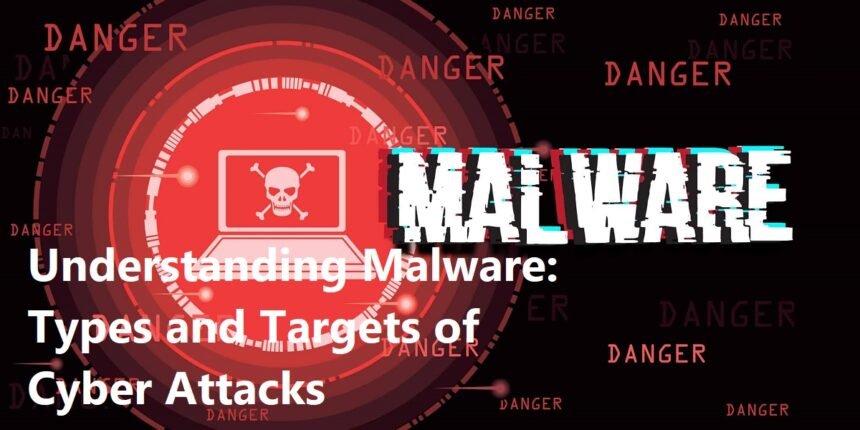Malware, short for malicious software, is any program or code designed to harm, exploit, or infiltrate computer systems, networks, or devices without the user’s consent. From stealing sensitive data to disrupting critical infrastructure, malware is a cornerstone of cybercrime. As digital threats evolve, understanding its various forms and targets is essential for individuals and organizations to bolster their defenses.
What is Malware?
Malware operates with malicious intent, often spread through phishing emails, infected downloads, or compromised websites. Cybercriminals deploy it to achieve goals such as financial gain, espionage, sabotage, or simply causing chaos. Unlike software bugs, malware is intentionally created to exploit vulnerabilities in systems or human behavior.
Common Types of Malware
- Viruses
- Attach themselves to clean files and replicate when the host file is executed. They can corrupt data, delete files, or spread to other systems.
- Example: The ILOVEYOU virus (2000) infected millions by masquerading as a love letter.
- Worms
- Self-replicating malware that spreads across networks without human interaction. They exploit security gaps to overload systems.
- Example: The Conficker worm (2008) targeted Windows OS, creating a botnet for remote control.
- Trojans
- Disguised as legitimate software, Trojans trick users into installing them. Once activated, they create backdoors for hackers or steal data.
- Example: Zeus Trojan (2007) stole banking credentials via keylogging.
- Ransomware
- Encrypts files or locks systems, demanding payment (often in cryptocurrency) for decryption.
- Example: WannaCry (2017) paralyzed hospitals, businesses, and governments worldwide.
- Spyware
- Secretly monitors user activity, capturing keystrokes, passwords, and browsing habits.
- Example: Pegasus Spyware (2016) targeted journalists and activists via zero-click exploits.
- Adware
- Displays unwanted ads, often bundled with free software. While not always harmful, aggressive adware can slow devices or redirect users to malicious sites.
- Rootkits
- Grants attackers administrative control over a device while hiding their presence. Often used to install other malware.
- Example: Stuxnet (2010) targeted Iranian nuclear facilities by exploiting Windows vulnerabilities.
- Botnets
- Networks of infected devices (“bots”) controlled remotely to launch attacks, mine cryptocurrency, or send spam.
- Example: The Mirai botnet (2016) hijacked IoT devices to disrupt major websites via DDoS attacks.
- Fileless Malware
- Resides in memory rather than files, making it harder to detect. It manipulates legitimate system tools to execute attacks.
- Example: PowerGhost (2018) used PowerShell scripts to mine cryptocurrency.
Who Do Attackers Target?
Malware campaigns are tailored to maximize damage or profit. Common targets include:
- Individuals
- Objective: Steal personal data (credit card numbers, Social Security numbers) for identity theft or financial fraud.
- Methods: Phishing emails, fake apps, or social engineering.
- Businesses
- Objective: Disrupt operations, steal intellectual property, or extort money via ransomware.
- High-Risk Sectors: Healthcare (patient data), finance (banking details), retail (customer databases).
- Government Agencies
- Objective: Espionage, sabotage, or influencing political outcomes. State-sponsored malware often targets national security data.
- Example: The SolarWinds hack (2020) compromised U.S. government networks via a poisoned software update.
- Critical Infrastructure
- Objective: Cripple power grids, water supplies, or transportation systems. Such attacks can cause societal panic or economic collapse.
- Example: The Colonial Pipeline ransomware attack (2021) disrupted fuel distribution in the U.S.
- Educational Institutions
- Objective: Access research data, student records, or deploy ransomware on underfunded IT systems.
- IoT Devices
- Objective: Exploit vulnerable smart devices (cameras, routers) to build botnets or spy on users.
Why Are These Targets Chosen?
- Financial Incentive: Cybercriminals prioritize high-value data (e.g., credit card info) or industries likely to pay ransoms quickly (e.g., hospitals).
- Geopolitical Goals: Nation-states target rivals to gain military, economic, or diplomatic advantages.
- Ease of Exploitation: Outdated software, weak passwords, or untrained users make certain targets low-hanging fruit.
How to Protect Against Malware
- Update Software Regularly: Patch vulnerabilities to block exploit attempts.
- Use Antivirus/Anti-Malware Tools: Detect and quarantine threats.
- Educate Users: Train staff/individuals to recognize phishing and suspicious links.
- Backup Data: Ensure offline backups to recover from ransomware attacks.
- Limit Access: Implement the principle of least privilege (PoLP) to restrict unauthorized system changes.
Malware remains a pervasive threat in our interconnected world, evolving in sophistication alongside technological advancements. By understanding its forms and targets, individuals and organizations can adopt proactive measures to mitigate risks. Cybersecurity is no longer optional—it’s a necessity in safeguarding privacy, assets, and societal stability.












